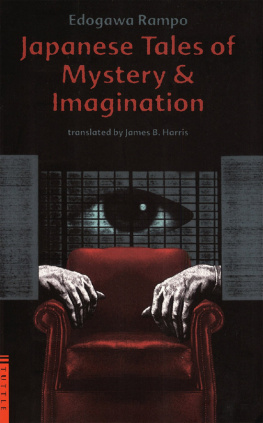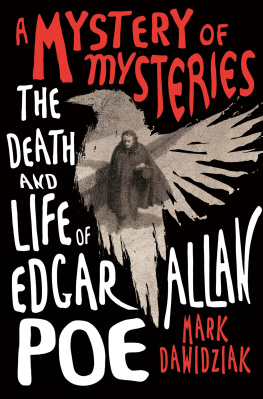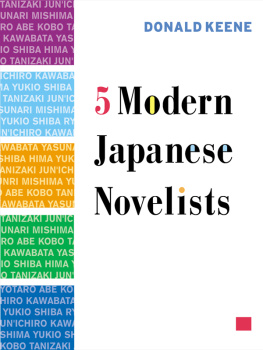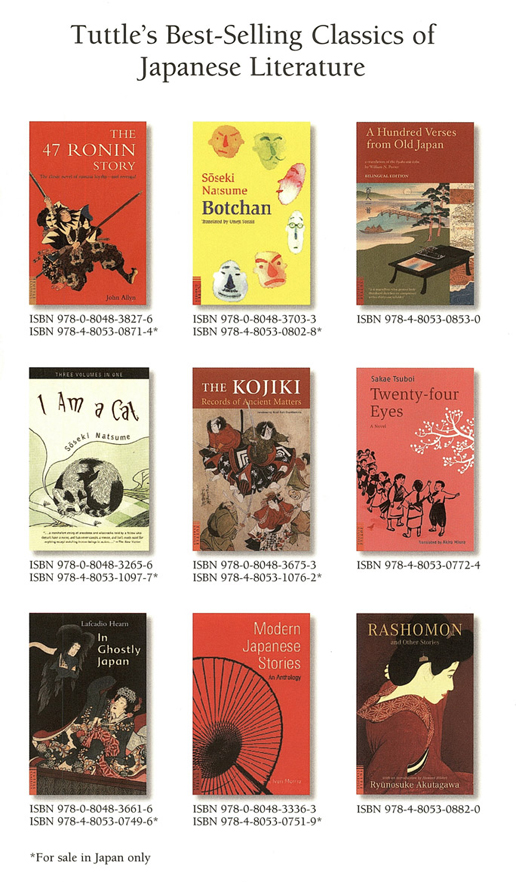CONTENTS
Published by Tuttle Publishing, an imprint of Periplus Editions (HK) Ltd.
www.tuttlepublishing.com
1956 by Charles E. Tuttle Company
First edition, 1956
All rights reserved
LCC Card No. 56006809
ISBN 978-0-8048-0319-9
ISBN 978-4-8053-0940-7 (for sale in Japan only)
Distributed by:
North America, Latin America & Europe
Tuttle Publishing
364 Innovation Drive
North Clarendon, VT 05759-9436 U.S.A.
Tel: 1 (802) 773-8930; Fax:l (802) 773-6993
info@tuttlepublishing.com
www.tuttlepublishing.com
Japan
Tuttle Publishing
Yaekari Building, 3rd Floor, 5-4-12 Osaki
Shinagawa-ku, Tokyo 141 0032
Tel: (81) 3 5437-0171
Fax: (81) 3 5437-0755
tuttle-sales@gol.com
Asia Pacific
Berkeley Books Pte Ltd
61 Tai Seng Avenue, #02-12
Singapore 534167
Tel: (65) 6280-1330; Fax: (65) 6280-6290
inquiries@periplus.com.sg
www.periplus.com
12 11 10 36 35 34 32 31
Printed in Singapore
TUTTLE PUBLISHING is a registered trademark of Tuttle Publishing,
a division of Periplus Editions (HK) Ltd.
Japanese Tales of
Mystery &
Imagination
Edogawa Rampo (Hirai Taro, 1894-1965) is widely regarded as the father of Japanese mystery writing. Born in Mie Prefecture, he graduated in 1916 from Waseda University and took on a series of odd jobs, working as an accountant, clerk, salesman, and peddler of soba noodles from a cart, before discovering his vocation as a writer. The first modern writer of mysteries in Japan, and long-time president of the Japan Mystery Writers' Club, Rampo derived his pen name from the Japanese pronunciation of Edgar Allan Poe, under whose spell he fell early in his career.
PREFACE
EDOGAWA RAMPO, THE AUTHOR of Japanese mystery stories, who is making his debut in the English language with the publication of this book, enjoys wide popularity in Japan. Although the same cannot yet be said of him among mystery readers in America and Europe, he has already been frequently mentioned in American book reviews and commentaries as being, without question, the dean of Japanese mystery writers. In the words of Ina Telberg, who wrote of Edogawa Rampo in her article 'The Japanese State of Mind" in the Saturday Review of Literature , "One of the most able exponents of the detective story in Japan is Edogawa Rampo, who heads the Japan Mystery Writers' Club. It is not improbable that if he is translated into English he may well enjoy here some of the popularity that the French Georges Simenon has had."
Ellery Queen, writing in his Queens Quorum (1951) introduced Edogawa Rampo and his works as belonging to the period between Agatha Christie and Edgar Wallace in his listing of the world's most famous writers of short mystery stories. Queen also remarked that, "If you say the name Edogawa Rampo aloud, and keep repeating it, the name will seem to grow more and more familiar; and it should, because it is a verbal translation of the Japanese pronunciation of Edgar Allan Poe."
David Dempsey, in his column "In and Out of Books," run regularly in the New York Times Book Review, also commented on Rampo as follows: "Japan's most famous mystery story writer is named Edogawa Rampo. Rampo took this name because he is a great admirer of Poe. When a visiting American asked Kanji Hatano (a noted Japanese psychologist) if the Japanese reading public didn't confuse Rampo with the real Edgar Allan Poe, he replied, Oh, no...Edogawa Rampo is much more famous.'"
In the section devoted to pseudonyms in the introduction to Dashiell Hammett's Woman in the Dark, published by the Jonathan Press Mystery, Rampo was classified as belonging to the Vocal Method group, with the explanation that "When Hirai Taro (Edogawa Rampo's real name) decided to write under a nom de plume, he went back, with reverence and relevance, to the origin of the species...to the Father of the Detective Story...."
Edogawa Rampo was born October 21, 1894, in Nabari Town, Mie Prefecture, the son of a merchant who also practiced law. Most of his childhood was spent in Nagoya, but at the age of seventeen he went to Tokyo for higher studies. Entering Waseda University in 1912, he majored in economics and graduated with high honors four years later. During the next six years, Rampo tried his hand at diverse occupations, working successively as clerk for an import-export house, accountant at a shipbuilding yard, assistant editor of a newspaper, advertising solicitor, etc., etc. Frequently, between jobs, he followed the menial trade of peddling soba , or Japanese noodles, pulling the cart and blowing the eerie-sounding flute of the soba peddler, thus just managing to keep body and soul together.
It was not until 1923, the year of the great earthquake which devastated the whole of the Tokyo-Yokohama area, that Rampo discovered his real calling, i.e., writing mysteries. Until that time, no Japanese writer had attempted a modern detective story, although there did exist numerous translations of the works of Western writers.
In those days, only a single mystery magazine was in existence in the whole of Japan. This was the Shin Seinen which featured Japanese translations of the works of such Western mystery writers as Poe, Doyle, Chesterton, Freeman, and others.
Rampo, who had been an avid reader of American and European mysteries since his high school days, being jobless in Osaka at the time, mailed in to Shin Seinen a short mystery entitled "Nisen Doka" (The Two-Sen Copper Coin). Much to his surprise, the story was snapped up, and published by Shin Seinen side by side with the works of world-famous writers. Invited by the publishers to write more stories, Rampo readily complied, and as his reputation continued to grow by leaps and bounds as Japans first spinner of modern mystery yarns, he finally went to Tokyo to pursue his new vocation in earnest.
During the thirty-one years up to the present, Rampo has written a total of twenty full-length books, fifty-three short stories and novelettes, ten full-length books for juveniles, and six volumes of essays devoted to the mystery story. The stories contained in this book are the best selections from Rampo's stock of short stories.
In introducing this noted Japanese mystery writer to the Western public a brief rsum of the mystery story in Japan is also in order. Old tales of court trials imported from China were the very first detective stories read in Japan. However, it was not until the year 1660 that a Japanese writer came under the spell of these Chinese classics and began to write stories of a similar nature.




















